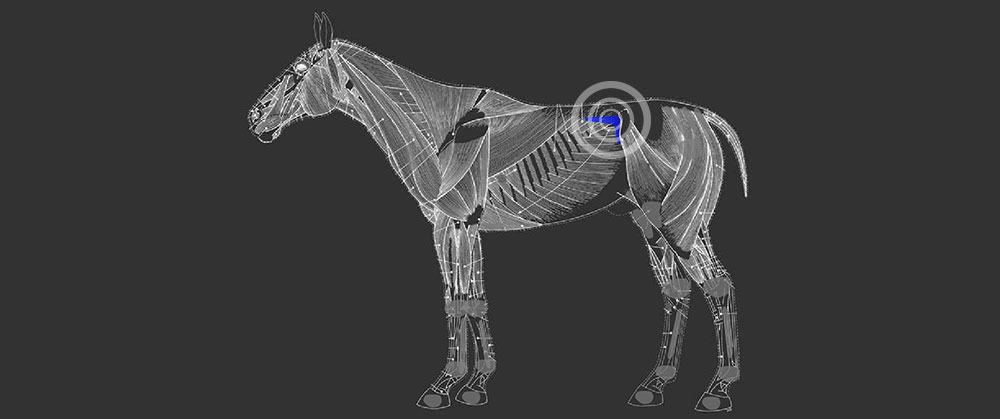Horse Iliopsoas Muscle Group
Iliopsoas Muscle Group


This group of muscles has a major role in the transfer of power and impulsion from the hind limbs through to the body and for the horse’s ability to work in collection. Some of the major nerves of the hind limbs exit the spine through this group of muscles. When the psoas is in a state of hypertonicity it pinches the femoral and lumbar nerves causing nerve inflammation, this initiates hypertonicity of the muscles supplied by the nerve such as the quadriceps and is also one of the major reasons why horse track medially in their hind limbs due to the medial hind limb hypertonicity and limb adduction.
Stress from the feet or any pain down the posterior aspect of the forelimb such as the suspensory, sesamoid, caudal knee, flexor muscles and the caudal pectoral muscles will initiate a secondary spasm/hypertonicity of the psoas group of muscles. Strains and tears are common enough in the psoas muscles which develop from hyperflexion of the hind limb in gallops and when swimming. Lumbo-sacral and sacro-iliac pain will also cause the psoas to hypertonify to help splint and protect these associated joints from pain in movement.
The acupuncture work-up can be very valuable in localizing the cause of the pain and hypertonicity in the lumbo-sacral region before any of the known clinical signs manifest and before the problem manifests to the point oflameness. It is also important in determining weather the fore or hind limbs are the cause of the lumbo-sacral stiffness and allow for further treatment of the cause which can be looked into by the vet.
Benefits of acupuncture include: